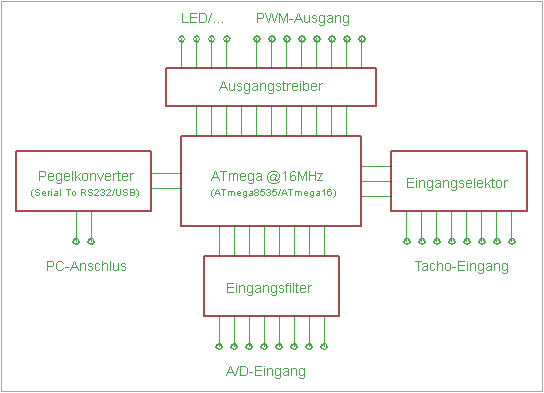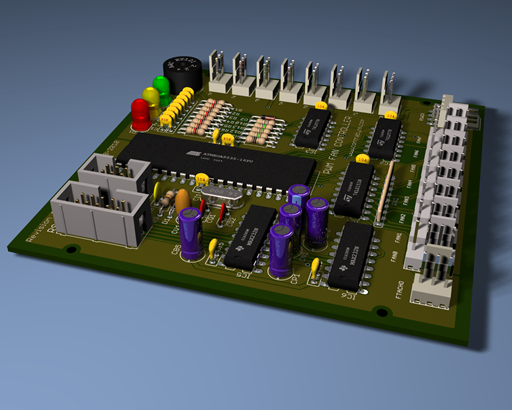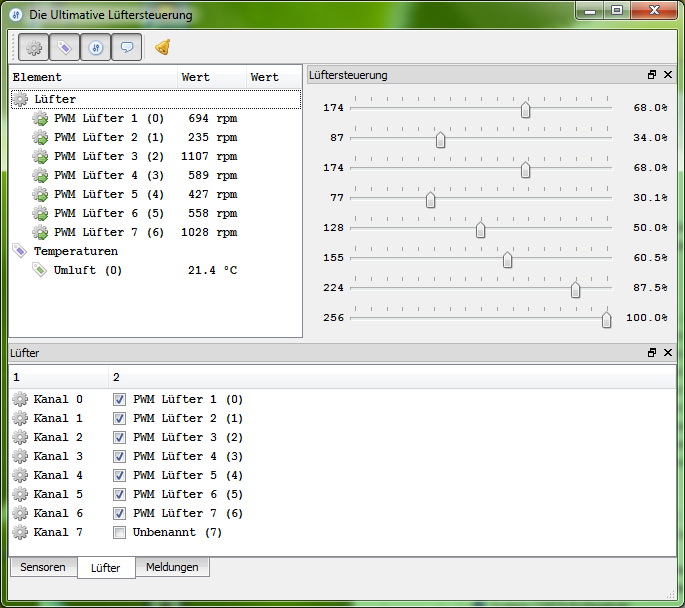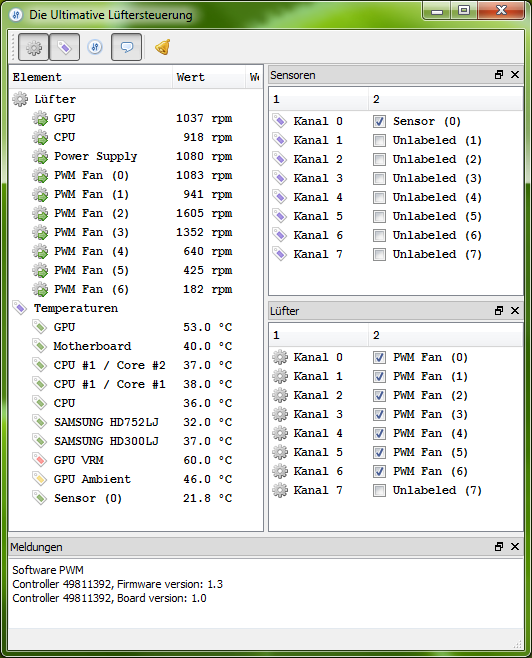8-Channel, 8-Bit, Hi-Speed, Software PWM with ATmega AVR-Controller!
On this page, an innovative technical solution is presented, which allows for a cost-effective, convenient, flexible and professional approach to cool the PC.
Using clever and unique firmware, I have succeeded in implementing a full-featured 8-channel PWM controller with a simple ATmega microcontroller using software.
An 8-bit AVR from Atmel and a 16 MHz clock can achieve the following results:
- PWM frequency: 20,833 kHz
- Control range: 25% to 100%
- Resolution: 8 Bit (256 steps)
- PWM channels: 8
- Jitter: 0 % (100 % stable signal)
- Delay of the control value: ca. 500 µs
(one control value can be applied to several channels simultaneously)
This would fulfill the prerequisites for the performance of the PWM specifications.
Intent
- 2 x 120mm housing fans (above and behind)
- 2 x 120mm hard drive / housing fans in front
- 1 x 100mm CPU fan
- 1 x 80mm Graphic card air supply
- 2 x graphic card- and power supply- specific fans
The Implementation
[This section will be revised, please be patient]
A good fan controller should also monitor fan speed and temperature. With just a few simple standard components…

Block diagram of the fan controller
[This section will be revised, please be patient]

Prototype of the fan controller
[This section will be revised, please be patient]
The Firmware
First and foremost, the firmware generates the PWM signal to the 8 outputs of a port. The control values are provided over the serial interface. In parallel, the firmware digitizes analog values periodically and sends them on to the PC. The tacho signal is also processed. Up to 8 temperature and 8 tachometer values per second can be transmitted. The status LED’s and the alarm sounder can also be controlled from the PC. In addition, the firmware can respond to requests of the Plug n ‚Play enumerator.

Fan controller in device manager
The PC Software
The program provides a graphical interface to configure the controller and to display the readings.

Program, screenshot 1
The fans and the temperature sensors can be identified and activated when required. In the basic functionality, the speed of the fans can be individually adjusted with the sliders.
The software gives audible and visual alarms if one of the activated fans should unexpectedly stop. The interruption of the connection to the controller is also signaled.

Program, screenshot 2

Program, screenshot 3
An interface to the Everest software has been implemented in order to evaluate the temperatures of the processor, chipset, graphics card and other components equipped with sensors.

Program, screenshot 4
This enables the program to centrally monitor the entire PC. In the professional version, an automatic fan control is integrated. This allows efficient and quiet cooling of the PC.
Summary
The advantages of the PWM control technique are undisputed. Good and cheap PWM-enabled fans are on the market. However, PC motherboards make insufficient use of the PWM technology. There are also hardly any PWM fan controllers for retrofitting available – especially with so many fan connectors.
This simple and inexpensive hardware, in conjunction with the operational software is a professional cooling solution. Server-, gaming- and performance-computers and demanding or energy-conscious operators will be served well with this solution. Today’s computer technology uses power-hungry components, which master better and better power management. The growing split between full load and idle calls for efficient, flexible and quiet cooling. This fan controller could immediately and elegantly fill the existing market gap.
I would like to market the technical innovation introduced here. Manufacturers, investors or others interested in the technology may contact me. The 8-channel software PWM algorithm might even be patentable. I am open to any suggestions for cooperation licensing, purchase or … and am happy to answer questions.
